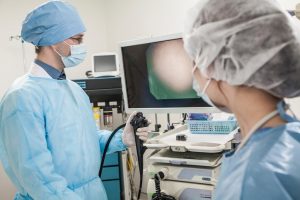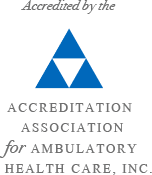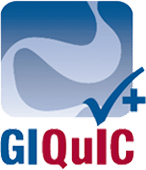What is Involved in an Upper Endoscopy?
 An upper endoscopy is a very common procedure that allows your doctor to examine – and sometimes treat – areas of your upper digestive tract.
An upper endoscopy is a very common procedure that allows your doctor to examine – and sometimes treat – areas of your upper digestive tract.
In this blog, the top NYC gastroenterologists at Gramercy Park Digestive Disease Center (GPDDC) explain what’s involved with an upper endoscopy.
What is an upper endoscopy?
This procedure, which is also known as an EGD, allows your doctor to examine your upper digestive tract by using an endoscope – a thin, flexible scope with a tiny light and camera on the end. Your esophagus, stomach, and/or the first part of your small intestine can be examined, depending on the reason for the procedure.
Your doctor may also be able to treat certain conditions during your upper endoscopy.
What symptoms could warrant this procedure?
Your doctor may recommend this procedure if you have any of the following symptoms:
- Trouble swallowing
- A feeling that food is stuck behind your breastbone
- Nausea and vomiting
- Chronic severe heartburn that’s not responding to treatment
- Abdominal pain
- Chest pain that’s not associated with a heart issue
- Anemia that doesn’t have a known cause
- Unexplained weight loss
- Black, tarry stools
What’s involved with an upper endoscopy?
You’ll receive sedation so that you’ll be relaxed during the procedure, and a mouthpiece will be placed in your mouth. You’ll lie down on your left side, and when you’re properly sedated, your doctor will insert an endoscope into your mouth, move it through your esophagus, and down into your stomach and the upper part of the small intestine.
Your doctor will examine any areas of concern and may also be able to correct issues, such as stretching a narrowed esophagus. Suspicious areas such as a polyp may be biopsied (removing a tissue sample for further testing).
What happens next?
You’ll be observed for about an hour, and you’ll need someone to drive you home. You may have a sore throat or some cramping, but these symptoms should last only about a day. When you can swallow comfortably, you can start eating and drinking.
Your doctor will share the results of the procedure with you and either talk with you about a treatment plan or make plans for further testing if more information is needed.
If you have any symptoms that suggest an upper endoscopy might be warranted, make an appointment today with GPDDC. We specialize in top-quality digestive care services for patients in the New York City metropolitan area and beyond.


